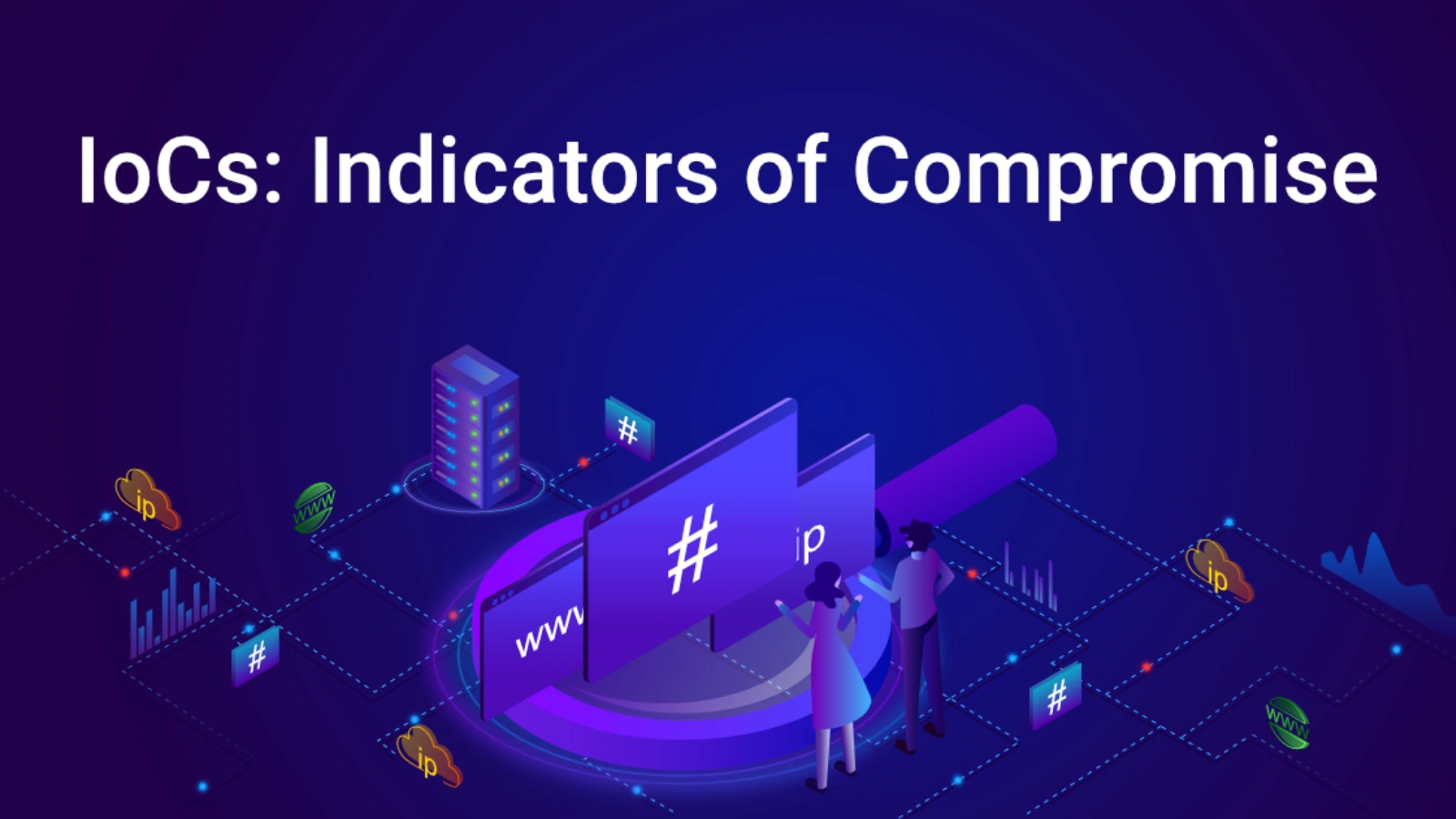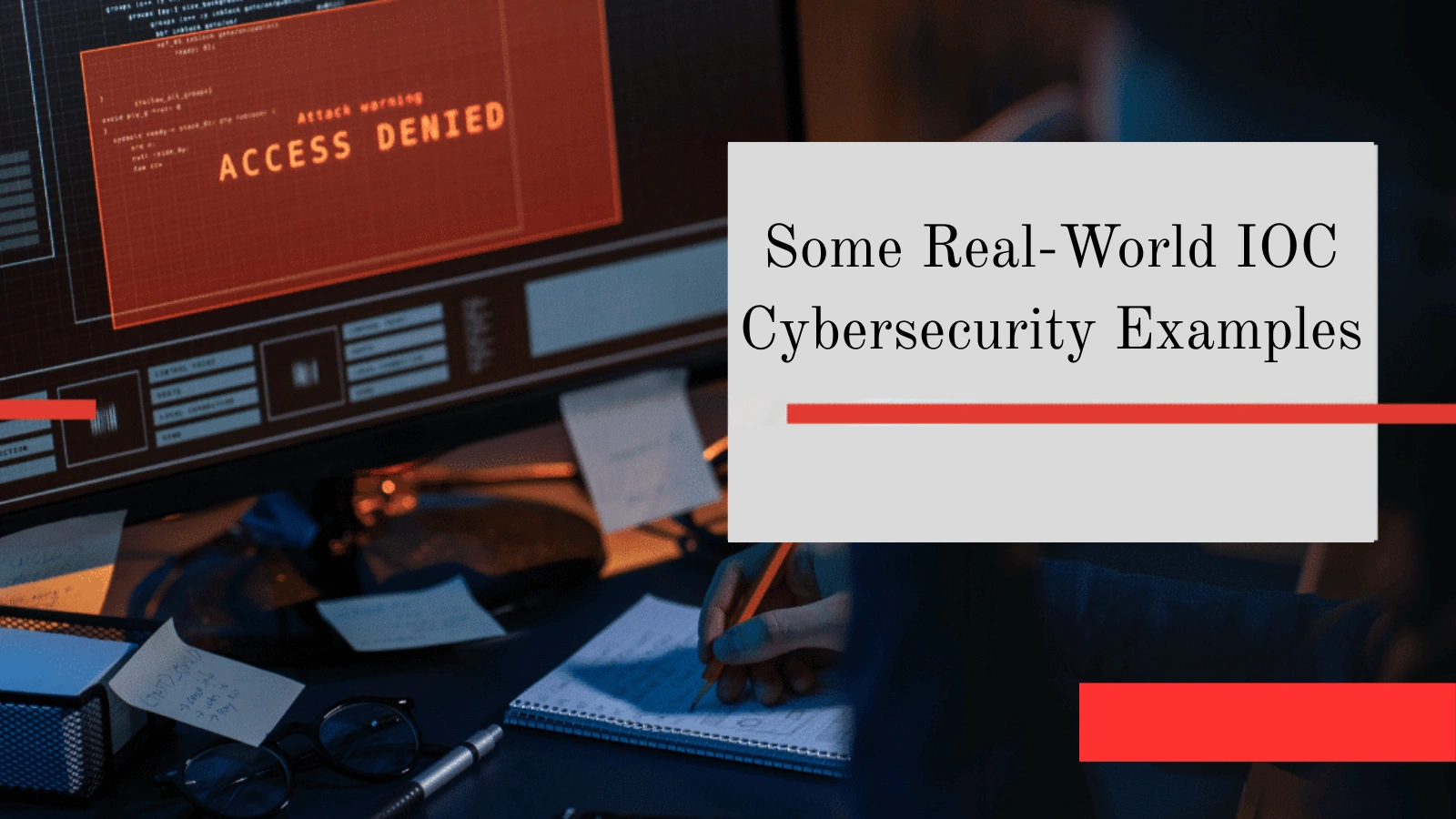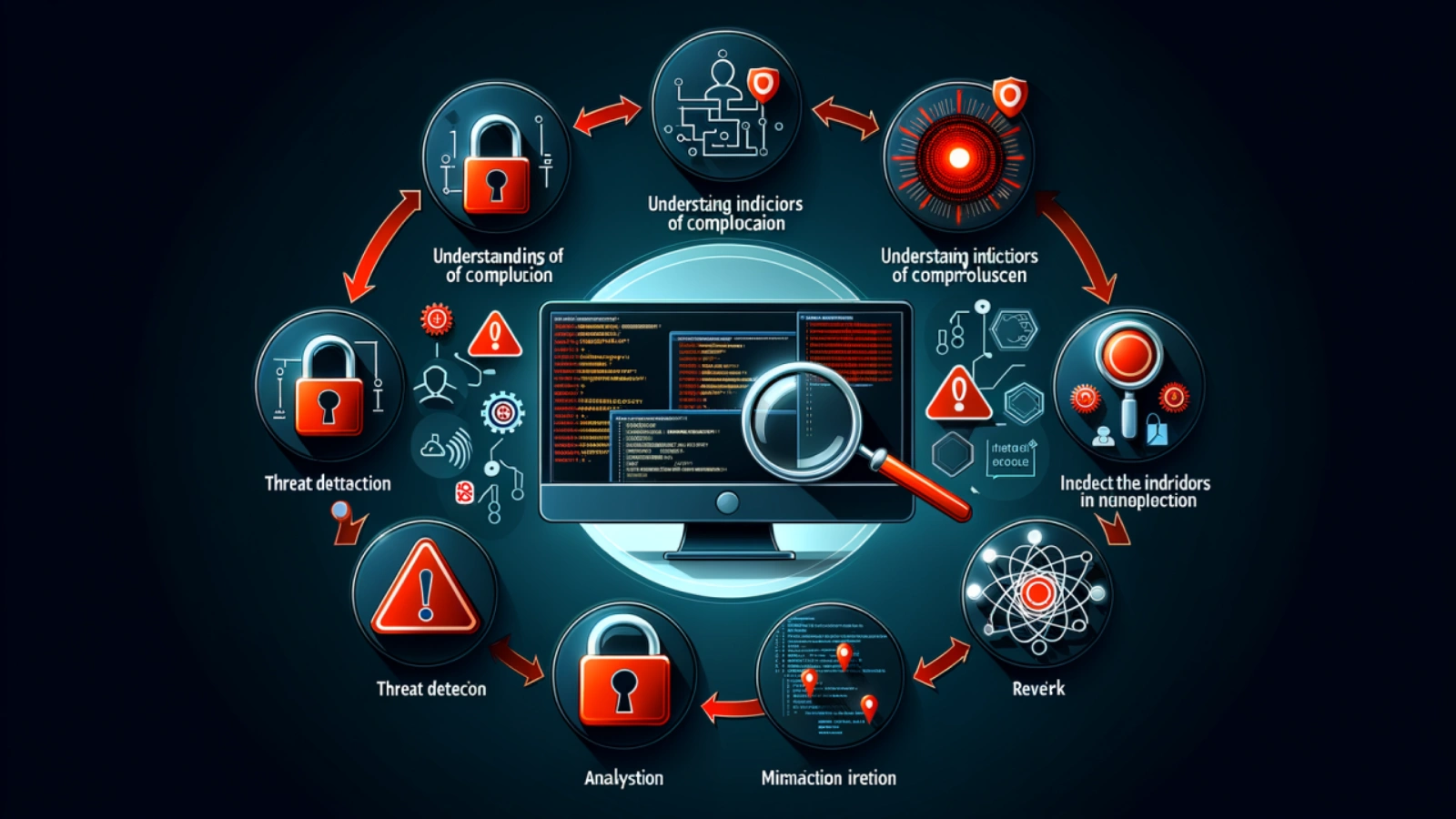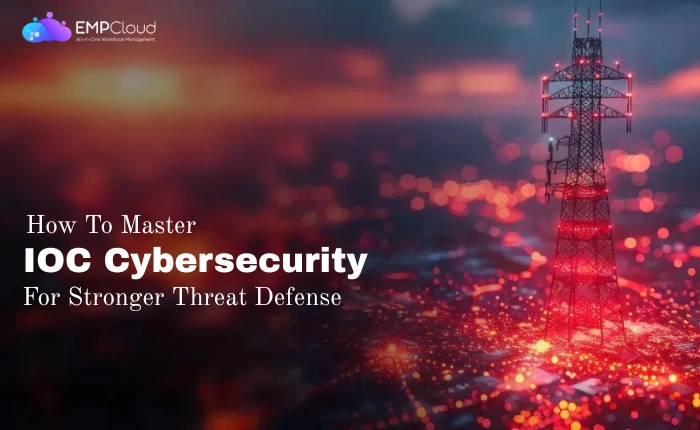
Cyber threats are evolving every single day, and businesses often find themselves racing to keep up. From ransomware that locks down systems to phishing emails that trick employees into giving away sensitive data, attackers are getting smarter and more sophisticated. That’s why IOC cybersecurity has become such a powerful approach; it helps organizations spot early warning signs of an attack and respond before serious damage is done.
In this blog, we’ll explore what IOC cybersecurity is, why it matters, how it’s used in real-world scenarios, and the best tools and practices to strengthen your defenses.
Listen To The Podcast Now!
What Is IOC Cybersecurity?
IOC cybersecurity refers to the use of Indicators of Compromise (IOCs) to detect malicious activity within a network, system, or device. IOCs are pieces of forensic data, such as unusual IP addresses, suspicious file hashes, or irregular login attempts, that signal potential intrusions or breaches.
In other words, IOCs act as red flags that alert security teams to suspicious activity before it escalates into a full-scale cyberattack. These indicators provide critical insights that help organizations investigate, respond, and remediate threats efficiently.
Why IOC Cybersecurity Matters?
Modern enterprises deal with vast amounts of data daily, making them attractive targets for cybercriminals. Without a strong detection system, malicious activities can remain hidden for weeks or even months.
Here’s why IOC cybersecurity is essential:
- Early Detection of Threats: By monitoring IOCs, security teams can spot attacks in their initial stages.
- Efficient Incident Response: IOCs help reduce the time it takes to identify and contain threats.
- Forensic Analysis: They provide vital clues during investigations of past breaches.
- Reduced Risk Exposure: Proactive detection limits the damage caused by cyber incidents.
- Compliance Requirements: Many industries require businesses to maintain strong threat detection practices.
What Are Indicators Of Compromise?
When discussing IOC cybersecurity, it’s important to start with the basics: what exactly are indicators of compromise?
Indicators of compromise (IOCs) are red flags that suggest a system, network, or account may have been compromised. They act as digital footprints left behind by attackers, helping security teams identify and contain threats before they spread.
Some common examples include:
- Unusual Network Traffic: Unexpected spikes in outbound traffic, especially to foreign or unrecognized IP addresses, could signal data exfiltration attempts.
- Unauthorized Logins: Multiple failed or successful login attempts from suspicious locations or at odd hours often indicate brute-force or credential-stuffing attacks.
- File Changes: Sudden appearance of unknown files, hidden executables, or unauthorized modifications to critical documents may suggest malware installation.
- Registry Key Changes: Altered or newly created registry entries can weaken system defenses or enable persistence mechanisms for malware.
- Unrecognized Processes: Unknown applications or processes running silently in the background may point to malicious payloads trying to avoid detection.
- Unusual System Behavior: Systems slowing down, frequent crashes, or disabled security tools can often be the result of ongoing compromise.
- Outbound Communications with C&C Servers: Connections to known command-and-control domains are a strong indicator of malware activity.
These indicators form the foundation of IOC cybersecurity, helping organizations detect threats early and build stronger defenses.
What Are The Different Types Of IOCs In Cybersecurity?
Indicators of compromise can be grouped into several categories, each shedding light on different aspects of malicious activity. Recognizing these categories helps organizations apply IOC cybersecurity more effectively and build layered defenses. Moreover, with the rise of remote teams, using reliable remote work software ensures that endpoint monitoring and secure access policies are consistently enforced across all locations.
Network Indicators:
These are often the first warning signs of an attack. They include suspicious IP addresses repeatedly attempting connections, unusual DNS requests to shady domains, abnormal port activity, or sudden spikes in outbound traffic that may indicate data theft or malware contacting command-and-control servers.
Host-Based Indicators:
These relate to evidence found directly on a compromised endpoint. Examples include malicious file hashes left behind by malware, unauthorized applications or processes consuming system resources, altered registry keys that weaken security, or unexpected configuration changes that allow persistence.
Email Indicators:
Since email remains a primary entry point for attackers, these IOCs are critical. They include phishing attempts with fake login pages, attachments carrying hidden malware, spoofed or lookalike sender domains, and unusual account activity such as bulk email forwarding or unauthorized inbox rules.
Behavioral Indicators:
These point to suspicious patterns in how users or systems behave. Red flags include sudden privilege escalation by ordinary accounts, abnormal data transfers outside business hours, multiple login attempts from distant geolocations within a short timeframe, or employees accessing sensitive files unrelated to their roles.
Each of these IOC types provides unique insights, and when analyzed together, they form a powerful foundation for detecting, investigating, and preventing cyberattacks.
Also Read:
20 Ways Remote Work Software Can Boost Team Productivity
What Are Some Real-World IOC Cybersecurity Examples?
Understanding IOC cybersecurity is easier when you see how indicators of compromise appear in real-world scenarios. Organizations often encounter IOCs such as:
- Multiple failed login attempts followed by successful access from a foreign IP.
- Detection of file hashes that match known malware signatures.
- Large-scale data exfiltration to an untrusted domain.
- Use of outdated protocols by internal systems communicating externally.
- Anomalous spikes in CPU or memory usage without legitimate cause.
An example of a security incident indicator is unusual outbound network traffic from a server during off-peak hours. This may signal that sensitive data is being exfiltrated by malicious actors. By monitoring such IOCs, security teams can detect hidden threats promptly, investigate suspicious activity, and respond effectively to prevent major breaches.
These indicators of compromise examples highlight the practical value of IOC cybersecurity in identifying and mitigating both internal and external threats.
The Role Of IOC Cybersecurity In Insider Threat Prevention
While IOCs are often associated with external threats, they are equally valuable in detecting internal risks. Employees or contractors with malicious intent may attempt to exfiltrate data or misuse privileges.
Incorporating insider threat prevention into IOC strategies ensures that organizations are not only protected from hackers but also from risks within their own walls. For example, unusual file transfers or repeated access to restricted data by an employee could trigger an IOC alert.
Alongside IOCs, organizations also need workforce management solutions that enhance visibility and control. For instance, tools like EmpCloud not only streamline onboarding, task allocation, and project monitoring but also strengthen security by tracking employee activities, access history, and compliance measures. Managers can generate a productivity report to assess work patterns, identify anomalies, and ensure that operations remain both secure and efficient.
By combining IOC cybersecurity with platforms like EmpCloud, businesses can proactively prevent insider threats while maintaining high productivity and operational efficiency.
How EmpCloud Complements IOC Cybersecurity?
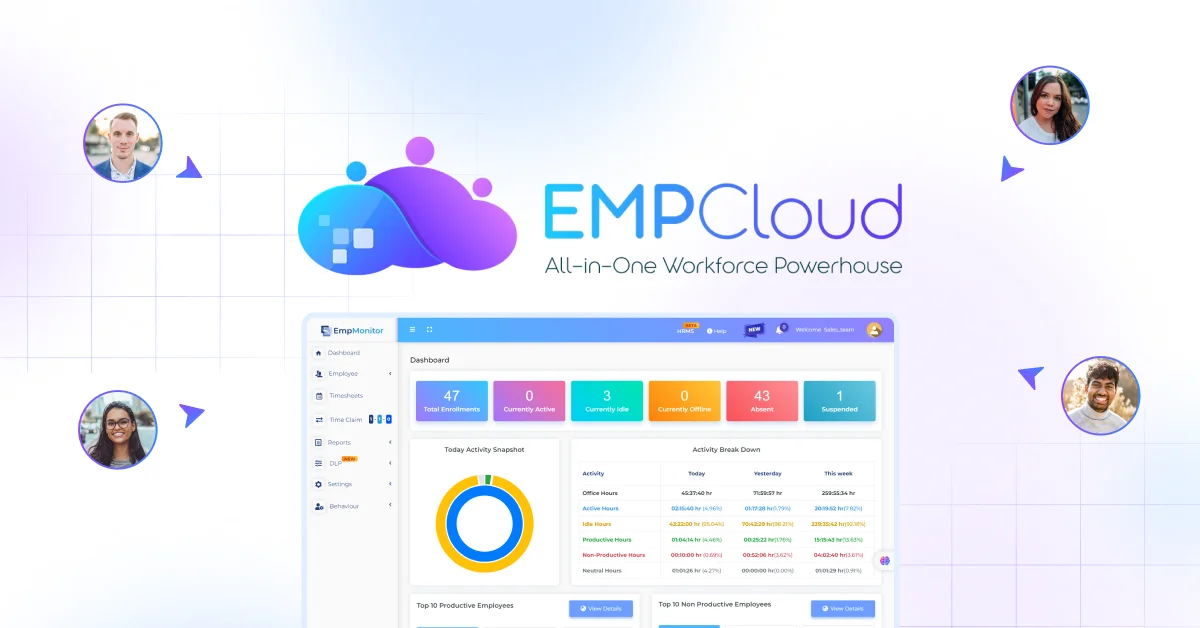
While IOCs are critical for identifying suspicious activities, businesses also need intelligent workforce management to ensure threats don’t arise from within. This is where EmpCloud stands out.
EmpCloud is a unified workforce management platform trusted by global leaders like Wipro, Cognizant, Airtel, and Tata Projects. It brings together advanced features for performance monitoring, compliance, and security, all of which align seamlessly with the goals of IOC cybersecurity.
Key Features Of EmpCloud:
- Manager-Centric Solutions: Gain full control over workforce operations with tools that track productivity, tasks, and client interactions.
- Time & Geo-Location Tracking: Monitor employee work hours and locations in real-time, reducing risks of unauthorized access or data misuse.
- Productivity & Project Management: Ensure on-time project delivery with actionable insights into employee performance.
- Data Loss Prevention: Secure sensitive business information with robust data protection tools.
- Face Recognition & Attendance: Contactless attendance systems add an extra layer of workplace security.
- Leave, Payroll & Exit Management: Automate core HR processes for efficiency and compliance.
- Centralized Dashboard: Access real-time insights into attendance, live locations, and task allocation in one unified view.
By integrating solutions like EmpCloud, businesses not only strengthen cybersecurity with IOCs but also enhance workforce accountability and prevent insider risks.
Also Read:
How To Create The Right Productivity Report?
How IOC Cybersecurity Works In Threat Detection?
IOC cybersecurity does more than just flag suspicious activity, it provides a structured, proactive approach to detecting, validating, and responding to threats before they escalate. Here’s how it works:
Data Collection:
Security tools continuously gather data from multiple sources, including system logs, network traffic, endpoints, emails, and cloud applications. This comprehensive monitoring ensures no unusual activity goes unnoticed.
Correlation:
The collected data is analyzed and cross-referenced with known threat intelligence feeds, malware signatures, and historical attack patterns. This step helps distinguish real threats from harmless anomalies.
Alert Generation:
When detected activity matches known indicators or exhibits unusual patterns, automated alerts are generated. Advanced systems can prioritize alerts based on severity, risk, and potential impact.
Investigation:
Security analysts examine alerts to confirm whether they represent a genuine threat. This involves reviewing affected systems, identifying attack vectors, and assessing the scope of potential compromise.
Containment & Response:
Once an IOC is validated, immediate measures are taken to contain the threat. This may include isolating infected systems, blocking malicious IP addresses, removing malware, or applying patches. The goal is to stop further damage while maintaining business continuity.
Continuous Improvement:
Insights gained from each incident feed back into the IOC cybersecurity process. Threat intelligence is updated, detection rules are refined, and future monitoring becomes smarter and faster.
This structured workflow enables organizations to respond to cyber threats efficiently, minimizing damage and improving overall security posture.
Indicators Of Compromise Examples In Real-World Attacks
Cybercriminals often leave behind identifiable footprints. Some notable indicators of compromise examples from past incidents include:
- WannaCry Ransomware: Known file hashes and kill-switch domain addresses were used as IOCs.
- SolarWinds Attack: Unusual DNS traffic and malicious DLL files were key IOCs.
- Phishing Campaigns: Spoofed email headers and suspicious domains served as critical indicators.
Studying these events reinforces the importance of IOC cybersecurity in identifying patterns that lead to effective incident response.
Tools For IOC Cybersecurity
Organizations need the right tools to maximize the potential of IOCs. Popular and effective solutions include:
SIEM (Security Information and Event Management):
Collects and analyzes logs from servers, networks, and applications to identify suspicious patterns or anomalies. SIEM platforms correlate data across the environment, making it easier to detect early signs of compromise.
EDR (Endpoint Detection and Response):
Continuously monitors endpoints for unusual behavior, unauthorized processes, and malware infections. EDR tools provide detailed alerts and help security teams respond quickly to incidents.
Threat Intelligence Platforms:
Offer up-to-date IOC feeds, including known malicious IP addresses, domains, and file hashes. These platforms help organizations stay ahead of emerging threats by providing actionable intelligence for prevention and response.
Network Traffic Analyzers:
Examine network packets in real-time to identify unusual traffic patterns, potential data exfiltration, or communication with suspicious external servers.
EmpCloud (Workforce & Security Monitoring):
While primarily a workforce management platform, EmpCloud complements IOC cybersecurity by tracking employee activity, access history, and compliance adherence. Monitoring tasks, project progress, and sensitive data access through EmpCloud helps organizations detect potential insider threats and ensure secure operations from within.
Implementing a combination of these tools ensures that IOC cybersecurity efforts are comprehensive, enabling organizations to detect threats proactively, respond effectively, and maintain operational security.
What Are The Best Practices For IOC Cybersecurity?
To get the most out of IOC cybersecurity, organizations should adopt proven best practices:
- Automate Detection: Use AI-driven platforms to analyze patterns and reduce false positives.
- Update Threat Intelligence: Keep IOC databases current with the latest global threat data.
- Integrate Security Layers: Combine IOCs with behavioral analysis, threat hunting, and insider threat prevention measures.
- Regular Training: Educate employees on identifying phishing attempts and suspicious activity.
- Continuous Monitoring: Establish 24/7 monitoring to detect threats at any hour.
By combining these practices, companies can maximize the effectiveness of IOCs.
Conclusion
IOC cybersecurity is essential for modern organizations to detect threats early and minimize damage. From understanding what are indicators of compromise to applying best practices, it helps create a proactive security posture.
Tools like EmpCloud complement IOC strategies by monitoring employee activity, tracking access, and preventing insider threats while boosting productivity.
With IOC cybersecurity and EmpCloud, organizations can safeguard against both internal and external cyber risks effectively.
FAQs
1. How often should organizations update their IOC databases?
Ans. Updating IOC databases regularly, ideally in real-time or at least daily, ensures that the latest threat indicators are captured. This helps organizations stay ahead of emerging cyber threats and strengthens overall detection capabilities.
2. Can IOCs detect zero-day attacks?
Ans. While IOCs are highly effective for known threats, detecting zero-day attacks can be challenging since these attacks exploit previously unknown vulnerabilities. Combining IOCs with behavioral analysis and anomaly detection improves the chances of identifying suspicious activity early.
3. How does employee monitoring enhance IOC cybersecurity?
Ans. Monitoring employee activity through tools like EmpCloud helps identify unusual access patterns, unauthorized file transfers, or repeated attempts to access restricted data. Integrating workforce monitoring with IOC strategies reduces insider threats and strengthens overall security posture.


